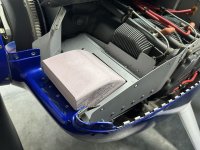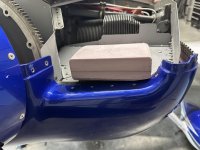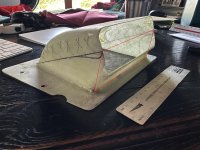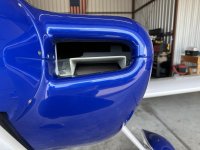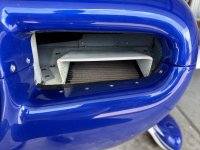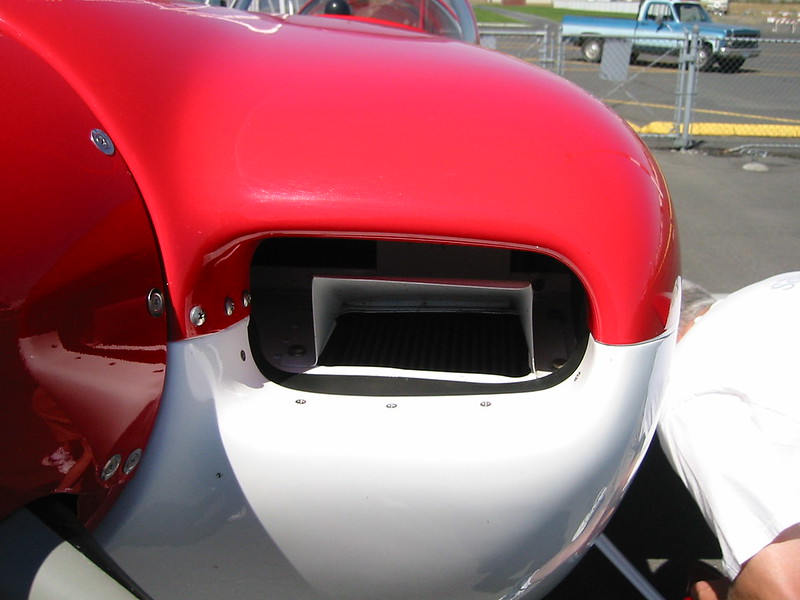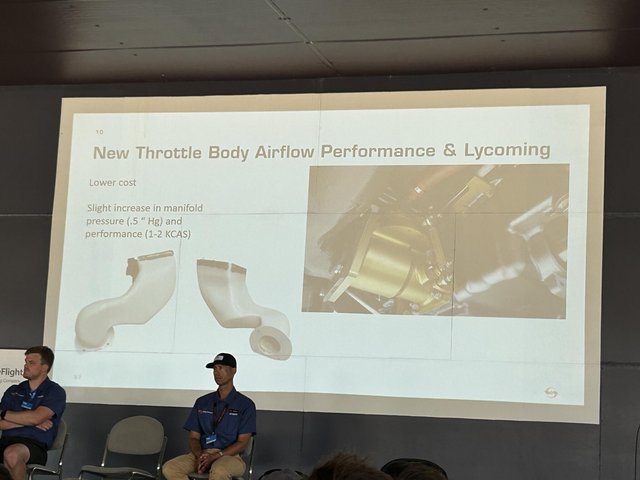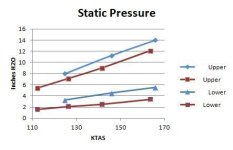I've been tinkering with various shapes of ducts trying to squeeze a bit more manifold pressure out of (into?) my IO-360-A1B6 equipped RV-7.
My intake manifold is the "standard" VA-132-2 S-duct, pulling intake air from the left inlet ramp. At wide open throttle and various altitudes I am getting roughly ambient pressure downstream of the fuel injection servo (#3 Cylinder port) -- Some examples:
6500ft -> Field altimeter of 30.02" -> 23.6" MAP...
8500ft -> Field Altimeter of 29.95" -> 21.8" MAP...
But I want more; It seems like I could fabricate a scoop of some stripe to convert that hurricane of propeller wash and incoming air into something more meaningful pressure-wise (and mass).
I fabricated a "hood scoop" to sit on top of the air filter...and it didn't work; only gained .1" of MAP and as expected all the CHT's & Oil Temp increased... Uncomfortably...
Back to the TLAR drawing board. I converted the hood scoop into a splitter of sorts, still attached to the top of the air filter, but only occupying the bottom half of the left inlet. It also didn't work; minimal gain in MAP" ~.1", CHT and Oil Temp were unchanged. Until you factor in the reduction in OAT we had yesterday (-10°F), so the efficiency suffered a bit, but well within the operating margin of my plenum/baffle system.
What's next? I think I'll remove the air filter from the system and see what the MAP does...
My intake manifold is the "standard" VA-132-2 S-duct, pulling intake air from the left inlet ramp. At wide open throttle and various altitudes I am getting roughly ambient pressure downstream of the fuel injection servo (#3 Cylinder port) -- Some examples:
6500ft -> Field altimeter of 30.02" -> 23.6" MAP...
8500ft -> Field Altimeter of 29.95" -> 21.8" MAP...
But I want more; It seems like I could fabricate a scoop of some stripe to convert that hurricane of propeller wash and incoming air into something more meaningful pressure-wise (and mass).
I fabricated a "hood scoop" to sit on top of the air filter...and it didn't work; only gained .1" of MAP and as expected all the CHT's & Oil Temp increased... Uncomfortably...
Back to the TLAR drawing board. I converted the hood scoop into a splitter of sorts, still attached to the top of the air filter, but only occupying the bottom half of the left inlet. It also didn't work; minimal gain in MAP" ~.1", CHT and Oil Temp were unchanged. Until you factor in the reduction in OAT we had yesterday (-10°F), so the efficiency suffered a bit, but well within the operating margin of my plenum/baffle system.
What's next? I think I'll remove the air filter from the system and see what the MAP does...



